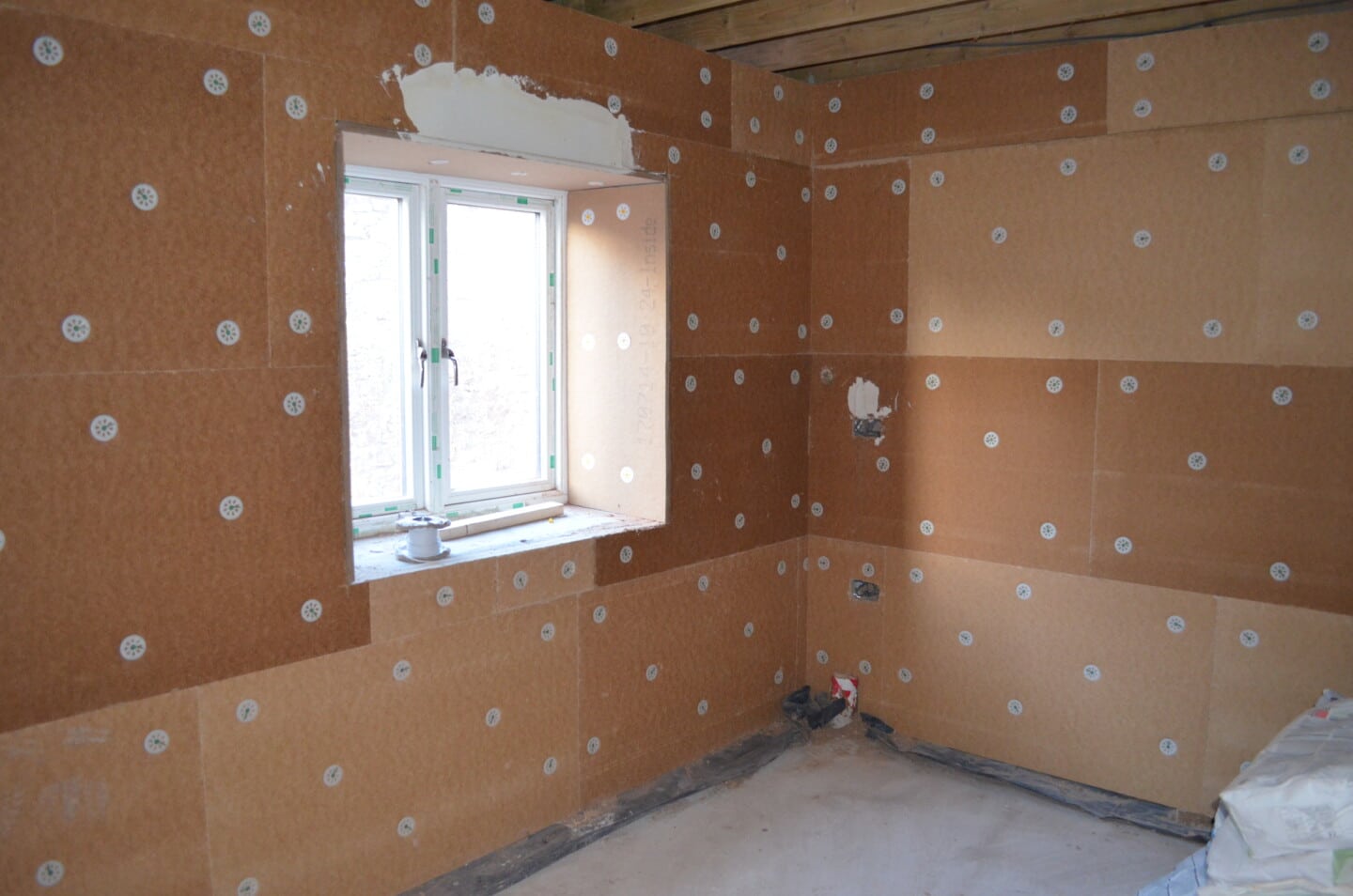SPECIFICATION GENERATOR
Find out which low impact materials are right for your building project.
Internal Insulation – Confused About What Goes Where?
Because we supply quite a range of different wood fibre boards, we often get asked to recommend the best insulation for many different types of walling, whether it is soft sandstone, hard flint or old brick. Whilst there are some solutions that will work adequately in most situations, they tend to only be quite thin layers of insulation and so have a limited impact. So, if you want to get the maximum level of insulation you can, certain insulation boards work better than others.

Generally, with wood fibre insulation, the denser the board, the more moisture it can cope with and so in situations where rain penetration is likely to be significant or the masonry is very thermally conductive and the climate cold, the denser boards are safer.
To create the best performing wall using vapour permeable, capillary active insulation like wood fibre insulation, moisture entering the wall from the exterior should be allowed to dry both towards the exterior and the interior, as freely as possible. The moisture can come from rain hitting the exterior or condensation that forms from air leakage and vapour flow from the interior. Without the ability to dry towards the interior and exterior, the wall can quickly become wet enough to rot any embedded timber, such as joists, lintels and beams.
When designing internal wall insulation specifications we ensure that the moisture levels within the insulation don’t go over a specific threshold. So, the lower density insulation boards can tolerate small amounts of moisture before risking decay or mould growth, with the opposite being true for higher density boards.
Brick or porous stone
Thin brick walls (single brick thick), particularly when the brick is pre-twentieth century, along with thinner sandstones, are very porous and so susceptible to rain penetration. As the rain penetrates it raises the moisture content of the wall and correspondingly, the insulation used on the inner face of the wall.
In these scenarios it is best to keep the insulation thicknesses to around 40-60mm so that there is still some heat flow through the wall to help keep the wall and the insulation drier in the winter. However, with a layer of render on the exterior or the use of facade impregnating creams, the rain penetration is largely prevented and so thicker insulation can be used.
Contrary to popular belief, having a cement based render with masonry paint on it is not necessarily detrimental to IWI as it does keep most of the rain out of the wall. This is not to suggest that this is the correct render type for historic masonry buildings but it does mean that the render need not be removed to let the building ‘breathe’.
Assuming the walls are fairly flat, simple rigid insulation boards can be used. Only a thin levelling plaster is required to ensure there are no gaps behind the boards and mechanical fixings are easily inserted.
With thicker brick walls (brick and a half thick or more) and very thick sandstone walls (600mm or so) rain penetration is lessened and also the extra thickness helps reduce the condensation levels at the junction of the wall and insulation board. Therefore it is possible to increase the thickness of the internal insulation and obviously get better insulation levels.
Granite, flint and other impervious stones
Although these types of stone are largely impervious to moisture, you still get rain penetration through the joints so this can still be an issue. Additionally, they are usually very hard and very thermally conductive so there is a greater risk of condensation where the insulation meets the wall (interstitial condensation). Consequently, it is often better to use higher density boards for insulating even though the thermal performance may be slightly lower.
Weather zones
Location also has a very big bearing on how much insulation can be used internally. Areas with higher wind driven rainfall and colder winters will tend to have to use less insulation unless the exterior can be rendered to prevent rain penetration. More sheltered areas or rendered walls can use more insulation and so location does have a bearing on what is possible.
Summary
In summary, whilst it can seem confusing to have various different types of wood fibre insulation products that all seem to do the same job, it allows a much wider range of solutions to be created. We are always happy to create the safest, most practical specifications for any scenario you may have so please feel free to contact us.